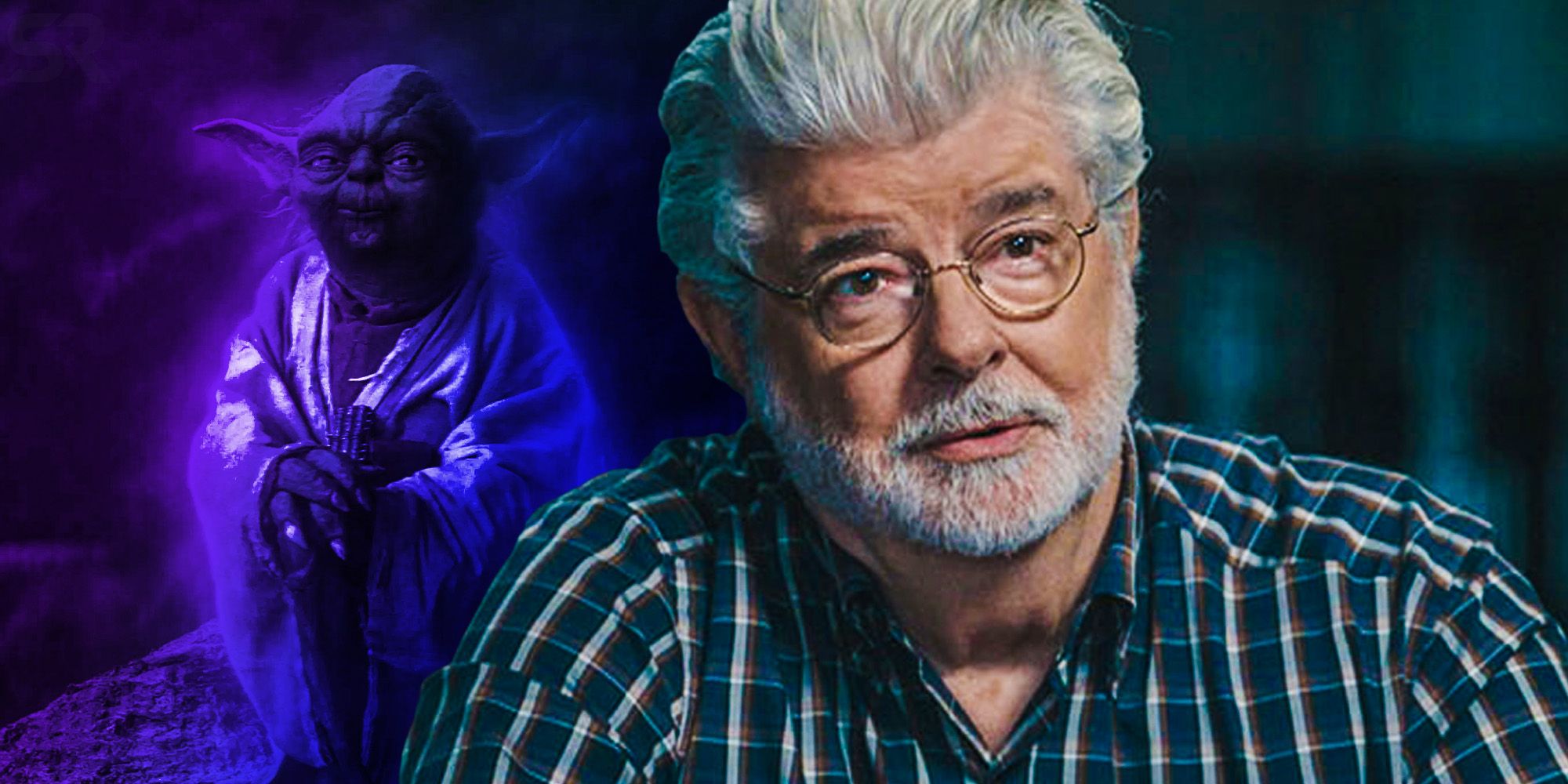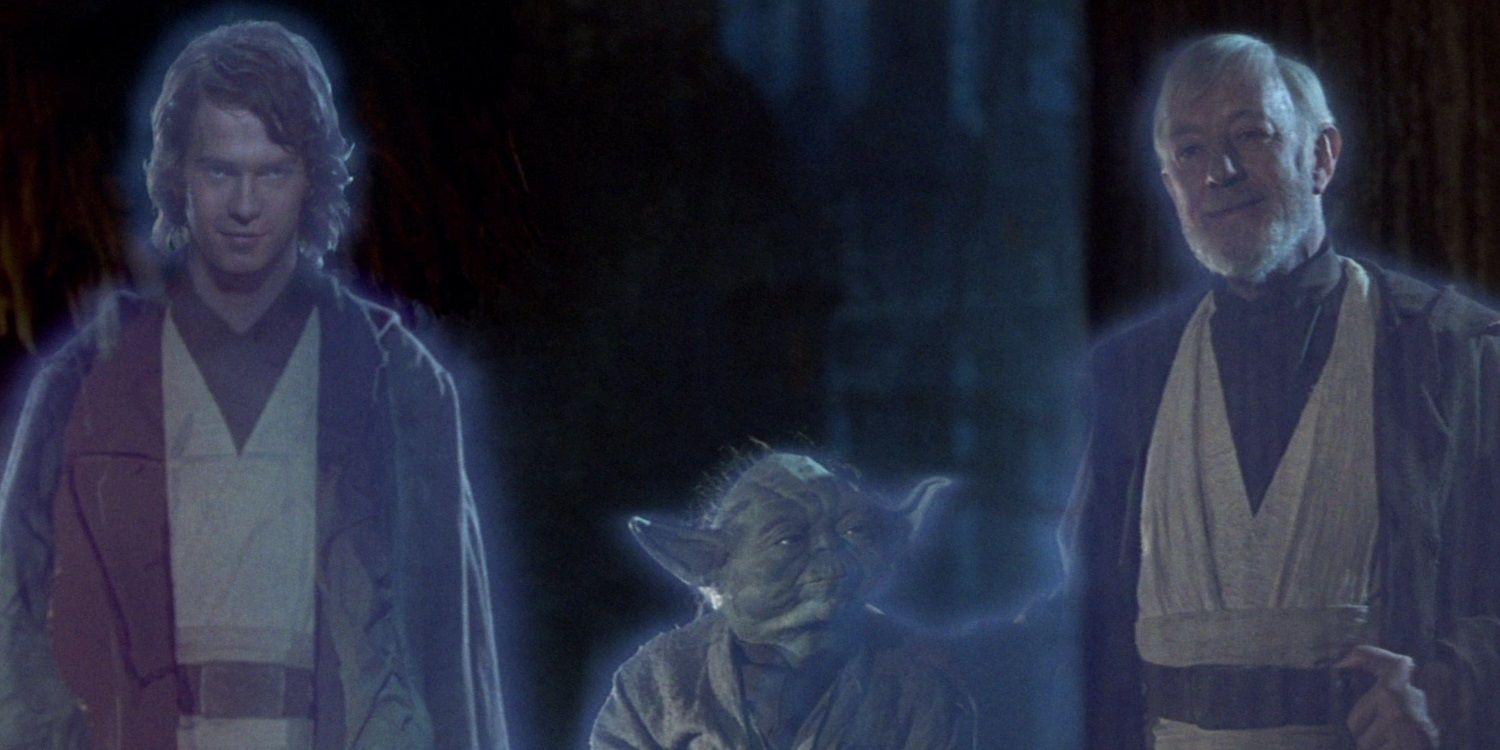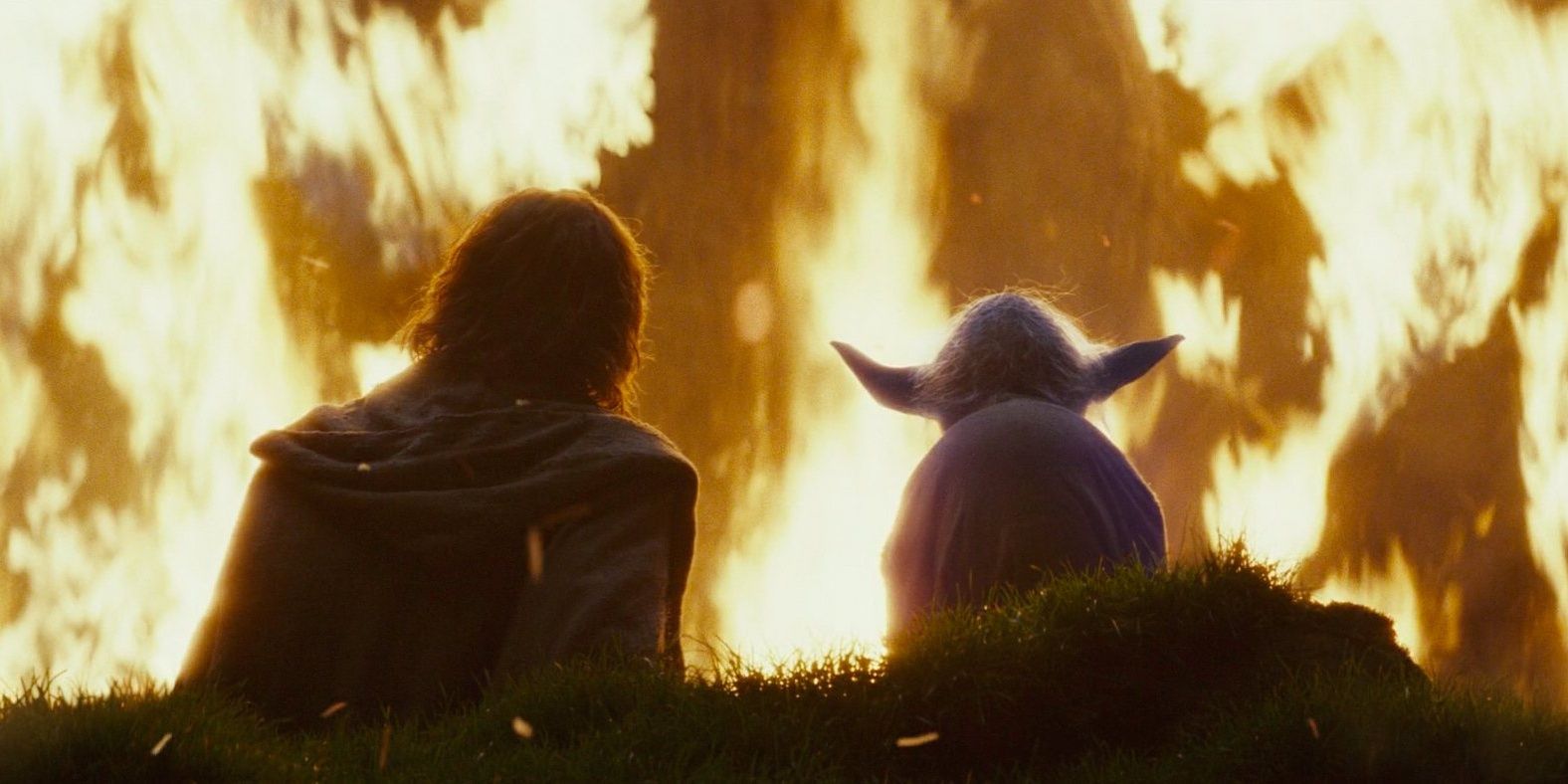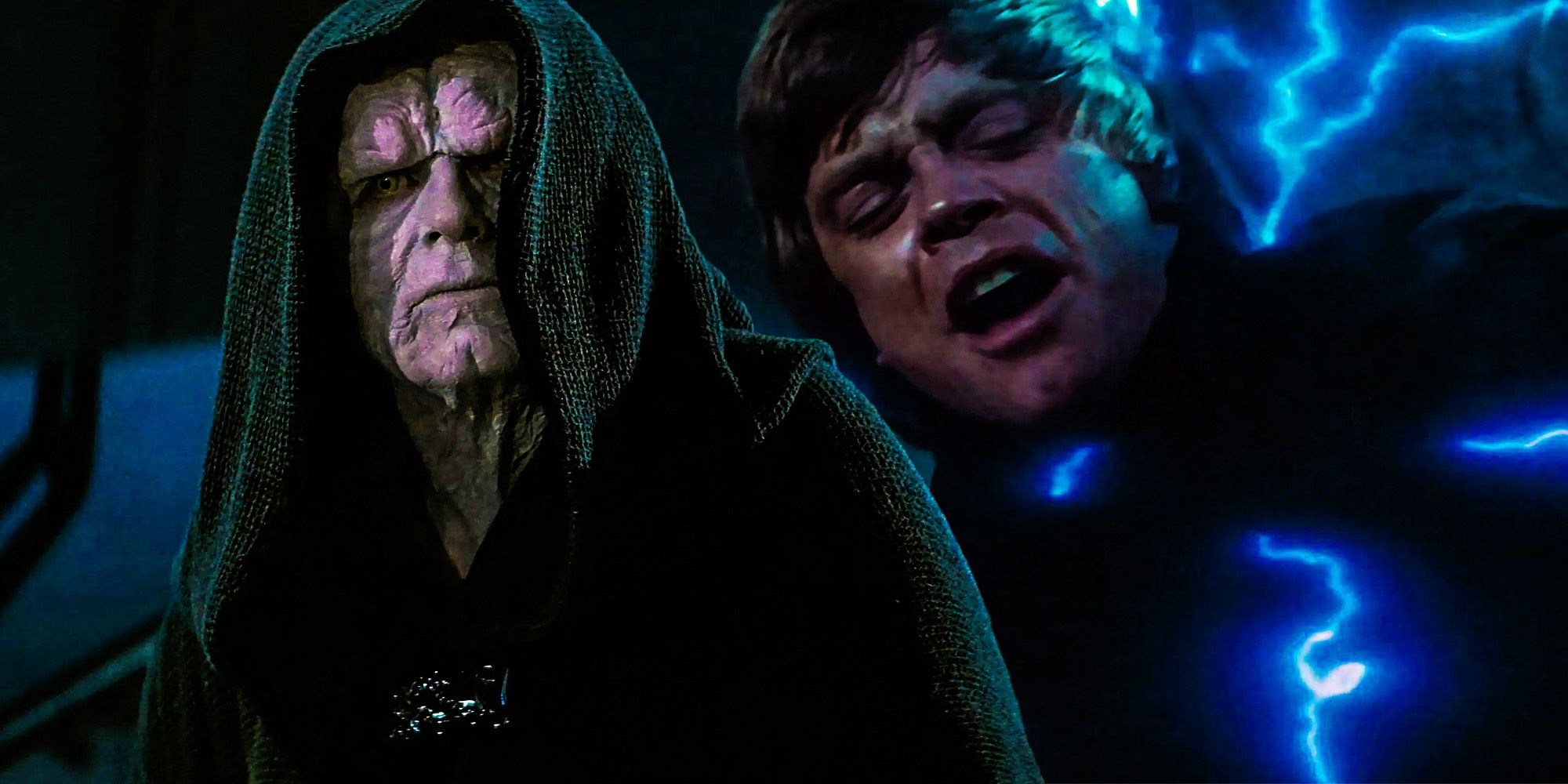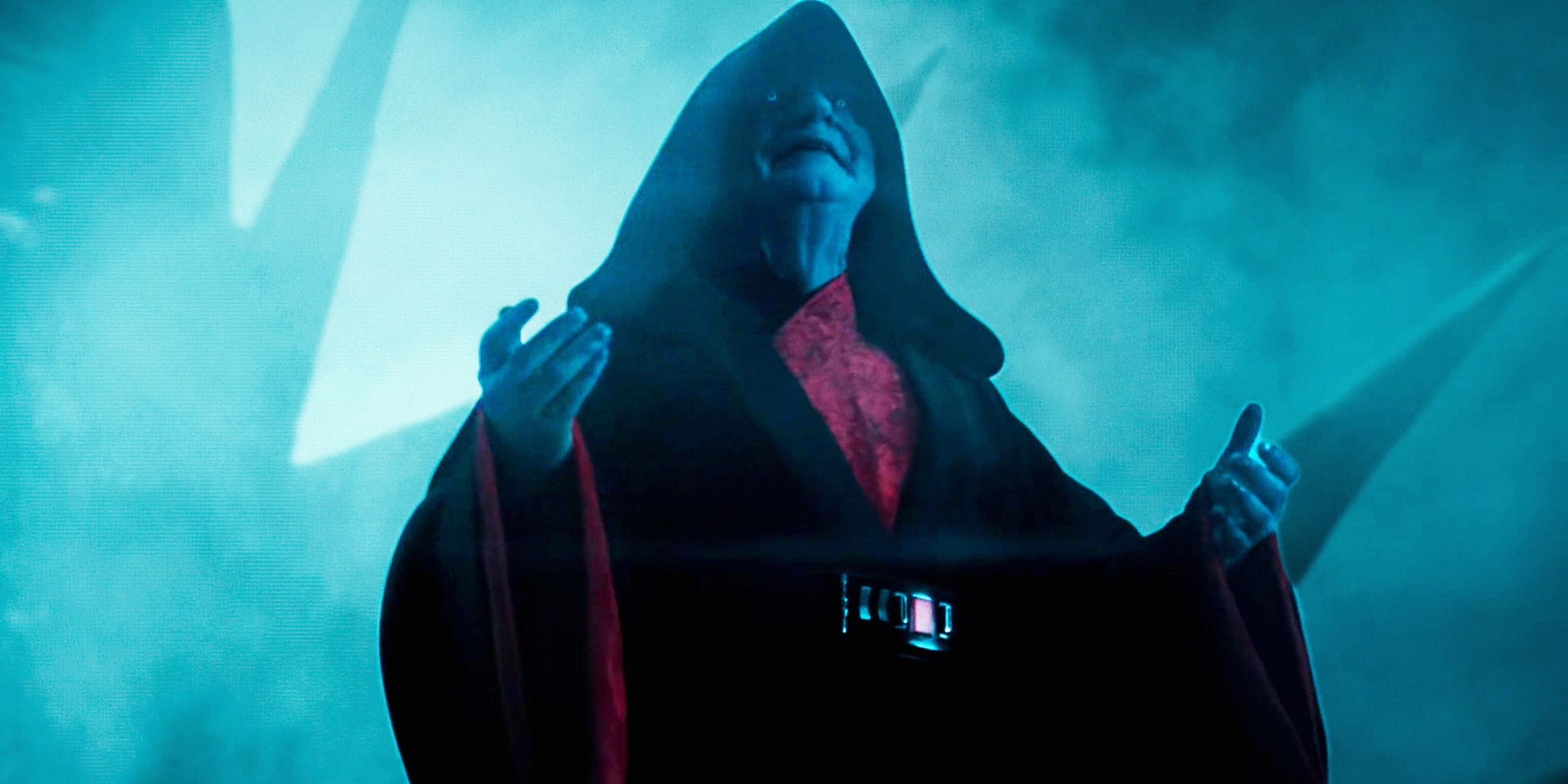George Lucas’ original Return of the Jedi ending - for Revenge of the Jedi - was very different than the one he actually ended up with, and Star Wars: The Last Jedi proved that it could have worked. The film’s early drafts, initially titled Revenge of the Jedi, would have made some big changes to the lore of the franchise – changes that were eventually cut. However, The Last Jedi incorporates one of those planned changes in a big way, showing that Lucas’ original vision could have actually worked out.
Though the original trilogy now stands as the firm foundation of the entire Star Wars franchise, the early films went through major revisions from first draft to production. The nature of the Jedi and the Sith, characters’ ages, and other details of the story were very different in Lucas’ original vision – for instance, Luke’s last name was originally Starkiller, and he was meant to play the older Obi-Wan role to Anakin Skywalker’s young Jedi Padawan. Han Solo was originally a giant alien, Return of the Jedi once had two Death Stars, and the list goes on and on.
One of the biggest changes made to Return of the Jedi involves the ending. The film had several different finales during Lucas and Lawrence Kasdan’s time working on it, including one that saw Luke kill Vader, turn to the dark side, and battle against his own sister and the Rebel fleet. Another ending featured Obi-Wan and Yoda – both of whom had already died – returning to join the fight against the Emperor. And after the release of The Last Jedi, it looks like that last ending could have actually worked.
Revenge vs Return Of The Jedi Plans Explained
In the early versions of the script, Revenge of the Jedi followed similar beats to Return of the Jedi, but with a number of changes. Leia isn’t involved in the rescue of Han on Tatooine, for instance. Instead, she stays with the Rebel fleet as it prepares for an attack on Had Abbadon – the polluted Imperial capital planet that eventually was changed into Coruscant – where two new Death Stars are being constructed. The moon that orbits Endor in the final version of the film was originally the moon of Had Abbadon, setting the entire climax around the seat of Palpatine’s power.
Like in Return of the Jedi, Luke confronted Vader and the Emperor in Revenge. Unlike in Return, he wasn’t alone. In a third-act twist, Obi-Wan comes back from the dead, apparently from the combined power and will of Yoda and Luke. The original script makes a distinction between the “netherworld,” a place inhabited by spirits after death, and becoming “one with the Force,” which is what happens to a soul once it leaves the netherworld. Obi-Wan manages to return to the physical world from the netherworld, rather than passing on into the Force. Yoda remains in the netherworld, where he retains some level of power. Together, the two Jedi Masters aid Luke in his final battle.
Obi-Wan actively engages in the fight against Palpatine and Vader, and Yoda offers Force backup from the netherworld, sending shields to deflect the Emperor’s Sith lightning. The combined effort ultimately defeats Palpatine, Vader turns back to the good side before passing into the netherworld, and the Empire falls. In a surprise final scene, Yoda resurrects himself and Anakin, and they join Luke, Leia, Han, Obi-Wan, and the rest of the crew in the Ewoks' victory celebration.
How Yoda's Force Ghost Was Different In The Last Jedi
The Last Jedi doesn’t include nearly all the crazy lore that Lucas originally meant to pack into Revenge of the Jedi, but it does feature some of the Force ghost changes from the original script. In The Last Jedi, Yoda appears to Luke on Ahch-To and offers some advice about the future of the Jedi Order. In a dramatic display, Yoda appears to summon a bolt of lightning to strike the island’s sacred tree, setting it ablaze. He tells Luke that the past isn’t everything, and that it shouldn’t be treated as such. It’s the first instance in Star Wars canon of a Force Ghost affecting the material world so drastically – a change that many fans took issue with. However, that twist is completely in-line with Lucas' original Revenge of the Jedi plan, and it sets up a ton of possibilities for the future of Star Wars.
Revenge Of The Jedi's Force Ghost Plan Could've Worked
Some parts of Lucas’ Revenge of the Jedi ending were clearly a bit too much. Characters literally coming back from the dead, for instance, with no real explanation of how, would have been a step too far. But the intervention of Force Ghosts in the final battle may have actually worked. In The Last Jedi, Yoda doesn’t do much. He intervenes just slightly in the material world, suggesting that there may be some unwritten rule about how much he’s allowed to do. That lesser level of intervention wouldn’t have completely changed the ending of Return of the Jedi, but it could have at least made for an exciting moment. Yoda using the last of his power to block Palpatine’s lightning from beyond the grave, for example, or Obi-Wan intervening to block just one blow of Vader’s saber. The film is obviously a classic without any such changes, but that doesn’t mean it couldn’t have been just as good with them.
Rise Of Skywalker Missed An Opportunity To Bring Back This Ending
In many ways, the ending of Star Wars: The Rise of Skywalker harkens back to Lucas’ initial Revenge of the Jedi finale. Exegol feels more like the dark Sith world that Had Abbadon was meant to be, the space battle is reminiscent of Lucas’ plan for the Rebels’ final fight, and – like Luke in Revenge – Rey ultimately wins with the help of past Jedi. The actual climax of The Rise of Skywalker has received extensive criticism for not explaining much of what actually happens. The Force Dyad between Kylo Ren and Rey, Palpatine’s convoluted plan and surprise rejuvenation, and the voices of the Jedi spirits all happen within a matter of minutes, with very little explanation for why or how. But what if that ending stayed a bit truer to Revenge of the Jedi?
Picture this: Rise of Skywalker actually explains Exegol’s powers – just a passing line about how the planet is rich in the Force, especially the dark side, which is why Palpatine was able to remain alive there. The Force Dyad concept is alluded to earlier in the film, so that when Kylo and Rey join forces, it makes more sense. Then, as Palpatine channels their power and the power of Exegol to restore his strength, Rey has an epiphany – if the Dyad and Exegol are both so strong, perhaps she can call in some backup. The Jedi voices begin to speak as she reaches out in the Force, but then they appear behind her – Ahsoka, Obi-Wan, Anakin, Luke. The audience sees them channeling their power through Rey, who, with that added strength, is able to overcome Palpatine and save the day. The Emperor is defeated, the Dyad dissipated as Kylo dies, and the Force ghosts disperse. Would it have been a better ending? There’s no way to know for sure. But after the beating The Rise of Skywalker took from critics and fans, it couldn’t possibly have been worse.

